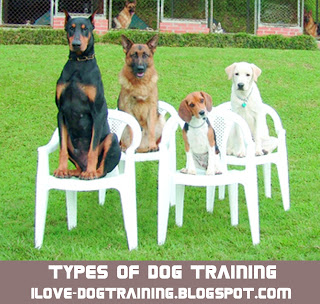Dog training involves teaching a dog how to respond to a specific set of commands and how to perform specific actions. There are different methods of training which apply to dogs of different breeds and sizes, although generally speaking the fundamentals are the same. The process is usually performed to achieve certain objectives that can range from basic training to more advanced or specialized needs.
Obedience training
This type of training is commonly used for house pets whose owners want to communicate with them in simple ways; this is usually done for their own safety and happiness and also to make others more comfortable being around them. The way dog training works is by rewarding good behaviour and ignoring and correcting unwanted behaviour. Basic obedience training usually entails six behaviours: down, stay, sit, close, heel and come.
Obedience training is typically performed by the owner but he or she can also enlist professional help on how to properly train the animal. Before a dog can be considered obedient it must be capable of responding each time a specific command is given. There is no exact length of time for how long this process will take as it varies in each case and the process can prove to be ongoing and lengthy. It depends on different factors such as the methods used, the skill set of the owner or trainer and in large part to the dog itself. Generally speaking basic obedience training usually ranges from six to ten weeks and although owners might employ a trainer to help, the exercise must be done largely between the owner and the dog as he or she will be the one who will communicate with the animal on a daily basis.
Law enforcement dog training
Before dogs can be considered for the position of law enforcement dogs, they must first be experts at basic obedience training which has taught them to obey the commands of their handler without any form of hesitation. A police dog is trained to assist police and other forms of law enforcement in their work. German Shepherds and Belgian Malinois are most commonly used in this line of work because of their availability and eagerness to train.
There are many other dogs that are also used in law enforcement for specific purposes. Cadaver dogs are trained to detect bodies which have decomposed and results have shown that the development of these dog training techniques has resulted in 100% accuracy. Beagles have a friendly nature and are used in airports to sniff luggage for restricted items; they are a member of the ‘hound group’ and look quite similar to the fox hound except with shorter legs and longer ears. They are small to medium in size and have tracking instincts as well as a keen sense of smell. Due to their size they are popular as house pets, but they do need adequate stimulation. Detection dogs are also used in this line of work: they sniff for specific items such as explosives, drugs, blood and other illicit substances. Detection dogs can be trained to search for substances such as plants, contraband, firearms, termites, mold and a host of other undesirable or banned items.

